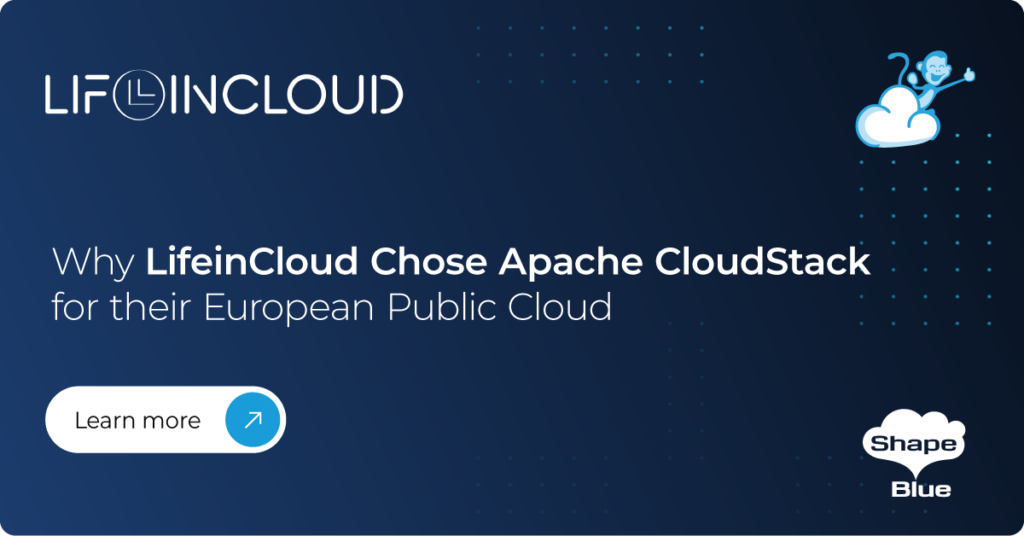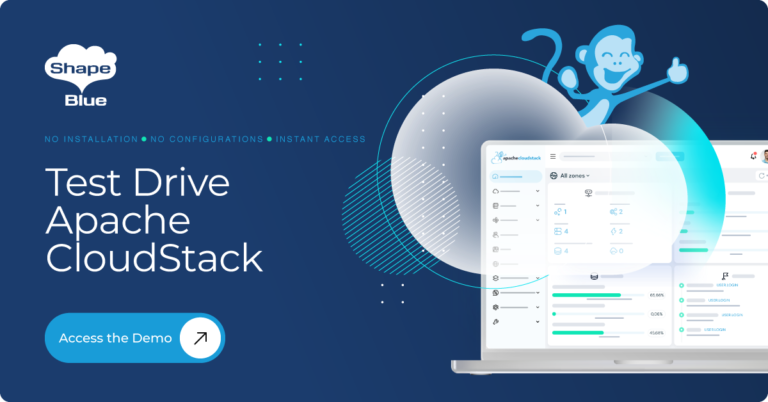Who would build their own Cloud in 2012?
Giles Sirett, Managing Partner of ShapeBlue gives his view of who’s currently building cloud infrastructures.
Cloud delivery had been one of the major drivers in the consumerisation of IT and it’s evolution into a utility Services model.
So, why would organisations want to build their own cloud? If they can purchase key services or infrastructure as utility from major vendors such as Amazon or Rackspace, then why continue to manage their own infrastructure? And why add complexity develop that infrastructure further into a cloud model instead of a traditional virtualised DC model ?
There are a number of drivers, but first we have to understand who is currently building clouds. So, what are the UseCase’s to build a cloud in 2012? I’ve come up with 5 pots in which most cloud builders currently fit. There will be others, but 99% of the cloud builders that we’re working with fit into one of these pots.
1. Service providers & telco’s
These guys have been hosting our infrastructure for years and they want to now sell SaaS or IaaS solutions to their customer base. They want to do this because it helps improve their margins by reducing the amount and level of technical skills required and help offer a more dynamic service to their customer base and to a certain extent, they have to do it to stay competitive.
2. Large enterprise private clouds
Moving to a cloud architecture allows large enterprises to view their compute and storage estates as a IaaS service. Departments or delivery teams can request compute and storage from a commodity pool rather than waiting for an infrastructure team to build, costs can easily be apportioned and compute resources can be used more efficiently
3. Development and test environments
Historically, developers created applications on stand-alone systems that often don’t match production environments. Code is checked into source code repositories where another QA team checks out the code and tests those applications on a different set of servers that often differ from production environments.
Companies who want to be more agile can standardize their developing, testing and production environments by defining servers enterprise wide and then offer those servers in a self-service model to their development staff. By standardizing the environments, they can then easily move from development to testing and eventually in production within a single consistent standardized system
4. “Cloud Insourcing”
An entire generation of applications have now been developed in a cloud environment (a generation is a very short period of time in this world). The advantages in terms of elasticity, scalability and non-capital costs are the biggest drivers. However, some of these businesses are now realising that, if the scale of their business justifies it, then a cloud model can be realised without using an outsourcer. For example, Zynga the successful games online games authors (writers of Farmville) have recently built their own private cloud as their overwhelming growth meant that relying on Amazon WS alone was no longer economic.
5. Niche public clouds
The big public cloud vendors such as Amazon have to adopt a “one size fits all model”. That is how they achieve their economies of scale. There are some businesses (or rather business types) who will not fit into this model. Companies with specific regulatory, security or functional requirements will be held back from adopting the public cloud model.
Therefore, we expect to see a range of niche public clouds developing to fulfil these specific requirements.
Lots of different people, but the same drivers
Irrespective of which of these categories organisations fall into, their reasons for moving from a traditional virtualised infrastructure to a cloud model show a high degree of commonality:
1. Elasticity
The ability to ramp up compute power on demand and to share that power across the entire infrastructure. By removing the stove-pipes of infrastructure and flattening their compute power into a cloud model, organisations can deliver a much more flexible cmpute solution.
2. Scalability
The limitations of the traditional datacentre we all know. A cloud model, by definition, has commodity components at it’s core. Components that are relatively cheap and easy to replace.
3. Commodity
As compute power and storage commoditise , there is increased expectation that these services can be purchased like any other commodity. Whether this “purchase” involves an actual financial transaction or an internal requisition, it should be a straight forward transaction. That transaction, under normal circumstances, should not need input from an infrastructure team: it should be
Steve is ShapeBlue’s COO and is responsible for all day-to-day administrative and operational functions of the business, including the consulting, programme management, and support functions.
Involved with CloudStack since 2012, Steve has led several large customer engagements including a number of major public and private cloud deployments; co-ordinated and developed worldwide teams and helped implement and deliver an enterprise grade support product.
Prior to ShapeBlue, Steve held senior technical, project and account management roles in enterprise IT outsourcing companies where he gained domain experience in the finance, professional services and defence markets.
Away from work, Steve is a father, keen guitarist, snowboarder and singer (not necessarily in that order).
Away from work, Steve is a music lover and semi-professional musician. Although he doesn’t speak at many technology conferences, he can sometimes be heard providing the evening entertainment.






